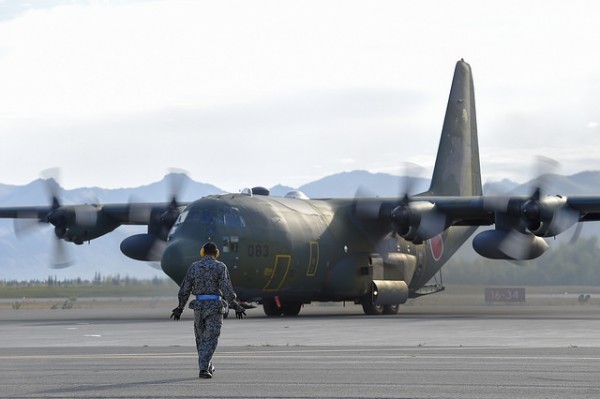Seventy years ago this month, the U.S. dropped two atomic bombs on Japan, prompting it’s surrender and the end of World War II. Now, the two nations’ armed forces are collaborating in Alaska.

As part of the Alaskan Command’s Red Flag exercises this summer, two dozen Japanese paratroopers are training with Army soldiers based at Joint Base Elmendorf-Richardson. After 10 days of exercises, the group flew north in cargo planes before jumping into the Donnelly Training Area near Fort Greely.
It’s not the first time the Japanese Ground Self Defense Force have partnered with Alaskan troops. Lieutenant Colonel Alan Brown says in the past, soldiers have gone through cold weather training at the Army’s Black Rapids site.
“The airborne capability is something that Japan has been developing in recent years. Our first experience with it recently is jumping with them over in Japan as part of an exercise this February.”
Brown says the goal is building a firmer partnership with one of the U.S.’s most important Pacific allies.
“The deeper the foundation, the more readily we’ll be able to integrate with them in an emergency situation–a contingency like a human disaster, where we need to assist in concert with that country for Recovery operations, or Search and Rescue, those types of things.”
The U.S. is increasingly shifting it’s military focus to the Pacific.
According to the Army, Tuesday’s jump was a success, with no reports of injuries.
Zachariah Hughes reports on city & state politics, arts & culture, drugs, and military affairs in Anchorage and South Central Alaska.
@ZachHughesAK About Zachariah




